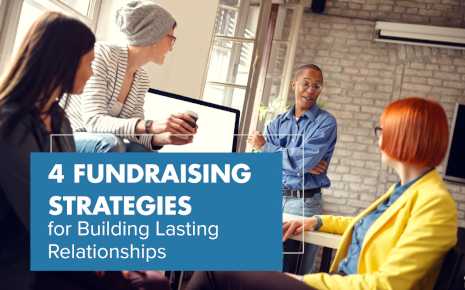The recent release of the Giving USA 2023 report, widely quoted and the most robust annual review of giving trends by donor and recipient type, showed a decline in individual giving in 2022 of 6.4 percent, or 13.4 percent adjusted for inflation. Alarming? Possibly. Surprising? No. Cause for Pause? I hope so.
Why Alarming?
Anytime a decline in revenue, in real terms, reaches double digits, anyone paying attention should take notice. This goes for both nonprofits and for-profits.
This doesn't mean that your organization experienced a decline, just the overall giving in aggregate went south. Overall, when adjusted for inflation, giving declined for seven of the nine recipient subsectors as reported by Giving USA. Public-social benefit organizations saw the biggest decline at 8.4 percent, or 15.2 percent adjusted for inflation. If you were in the international affairs sector (10,9% higher), health arena (5.1% higher), or arts, culture, and humanities segment (2.9% higher), you likely saw a nominal increase.
Why Not Surprising?
While overall giving was down by 3.4 percent in total, the biggest decline by source of giving was by individuals at 6.4 percent in nominal terms. As is also widely quoted in the popular press, individuals account for the vast majority of charitable dollars, and 2022 was no exception. This source of dollars, which usually hovers around 70 percent of the total given, is below 70 percent for the fourth year in a row, and came in at 64 percent in 2022.
The decline in charitable giving was worse than the decline in 2008, often referred to as The Great Recession, even though we are not officially in a recession, unemployment is still at historic low levels, and the pandemic is in our rearview mirror (thankfully). What it does demonstrate is the behavior of people based on their beliefs, personal situations, and outlook for the future, or behavioral economics as academics call it. (Side note: isn't all economics behavioral?)
We have heard for several years now of the coming of rising interest rates, slower growth, and the return of inflation. They have now come roaring back with a vengeance, and were exacerbated by all of the money poured into the economy by COVID mitigation. Since wages didn't keep up with inflation, people had less money to spend. When their 401 (k)'s took a hit, they felt that they were less wealthy. When the price of a house went up, as did the cost of borrowing to mortgage it, their monthly spending was less flexible.
The fact that individuals cut back is not surprising. The reasons they did so are not surprising. Some nonprofits adjusted, some did not.
Why Cause for a Pause?
To put all of this in practical terms, nonprofits today are faced with:
- Higher donor acquisition costs
- Higher costs for experienced fundraising staff
- More competition from
- Increasing numbers of nonprofits
- More channels to raise money
- More noise from the deluge of instant information
Given these headwinds, doing more of the same is probably not the best solution. If there ever was a time to reevaluate, this is probably it. I feel the most valuable thing a nonprofit can do to become more financially sustainable is move from the donor/charity model of raising money to an investment-driven model. Investment-driven models focus on the outcomes you deliver, which are much more appealing to today's nonprofit investors, especially those that can make transformative, rather than transactional, investments.
Moving to this model is more than just changing your vocabulary from donor to investor. But believe me, it's worth it.






